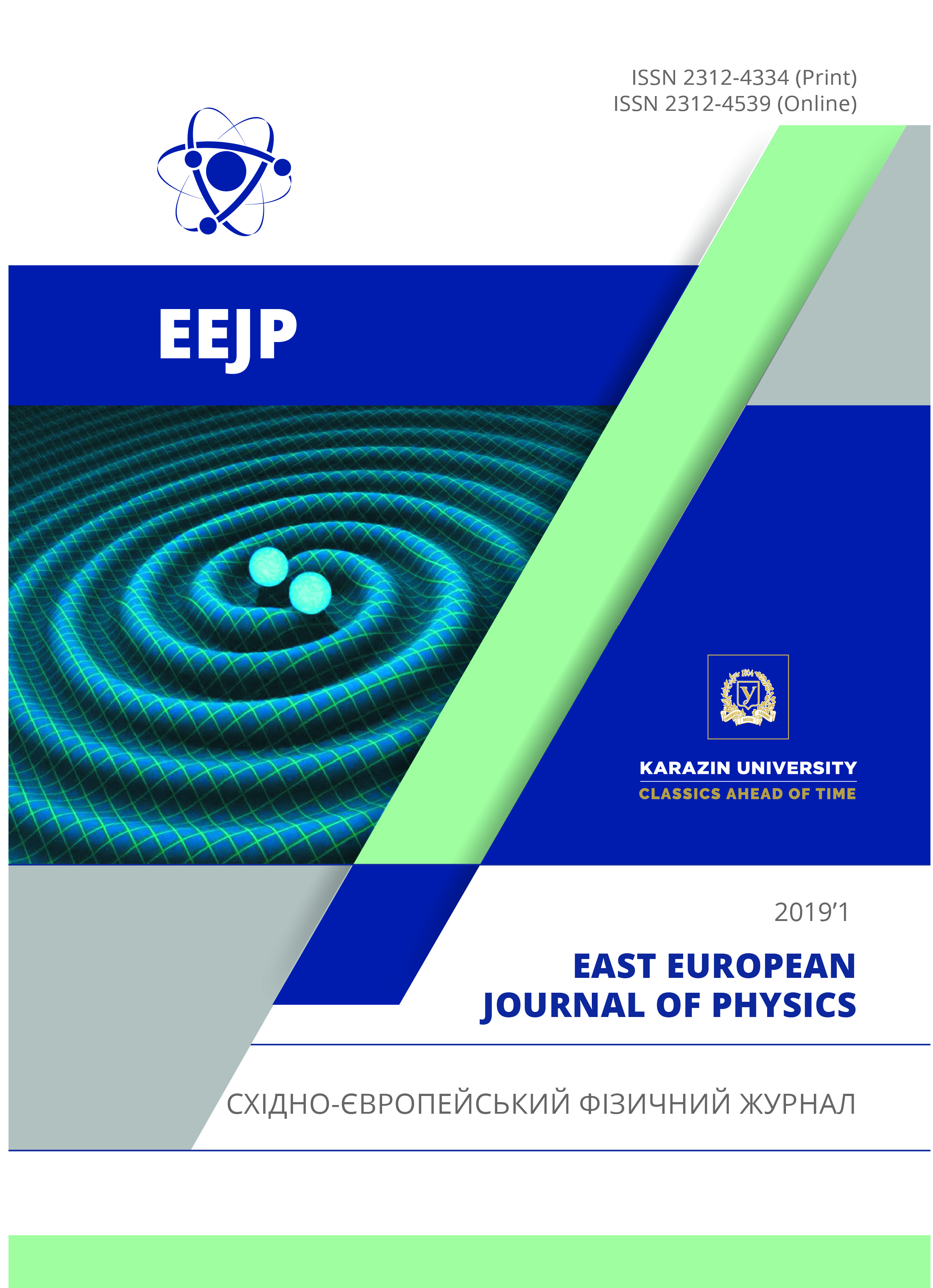Народження cc¯ та bb¯ кваркових пар в pp зіткненнях при енергіях експериментів на великому адронному колайдері
Анотація
Народження зачарованих і боттом кварк–антикваркових пар в протон–протонних зіткненнях моделюється за допомогою комп’ютерних програм, що було сґенеровано за допомогою MadGraph5_aMC@NLO. Деревинні партонні процеси враховуються в перших трьох порядках теорії збурень у квантовій хромодинаміці. Розглянуті жорсткі процеси мають два, три та чотири партони в кінцевих станах. Ці кінцеві стани містять одну або дві пари важких кварк-антикварків. Розрахунки виконуються з функціями розподілу партонів, отриманих колаборацією NNPDF з використанням методів нейронних мереж. Вплив багаторазових партонних взаємодій, злив в початковому та кінцевому станах на інтегральні перерізи (ІП) вивчається узгоджено з використанням ґенератора подій Pythia 8. ІП обчислюються в центральній області бистрот та під малими кутами емісії важких кварків за умовами експериментів ALICE та LHCb на Великому адронному колайдері ЦЕРН. Реакції досліджено при поперечних імпульсах важких кварків до 30 ГэВ /c. ІП, що було розраховано в лідируючому порядку (ЛП) з Pythia 8, в деревинному наближенні з MadGraph5, а також на основі FONLL–підходу, узгоджуються між собою в межах смуг невизначеностей властивих теорії та методам, що використовуються. Включення у розрахунки партонних процесів в наступному за лідируючим порядку (НЛП) і Н2ЛП на додаток до ЛП приводить до зростання ІП. Це збільшення зменшує неузгодженість з перерізами, що було отримано ALICE та LHCb. Варіації ІП, пов'язані зі шкалами перенормування та факторизації, значно перевищують отримане збільшення ІП в НЛП та Н2ЛП, невизначеності моделі NNPDF, і точність вимірів перерізів, які було виконано ALICE та LHCb. Багаторазові партонні взаємодії, просторово- та часо-подібні партонні зливи не змінюють суттєво ІП.
Завантаження
Посилання
M. Cacciari, S. Frixione, N. Houdeau, M. L. Mangano, P. Nason and G. Ridolfi, J. High Energy Phys. 1210, 137 (2012), https://doi.org/10.1007/JHEP10(2012)137.
M. Cacciari, http://www.lpthe.jussieu.fr/~cacciari/fonll/fonllform.html.
J. Alwall, R. Frederix, S. Frixione, V. Hirschi, F. Maltoni, O. Mattelaer, H.-S. Shao, T. Stelzer, P. Torrielli and M. Zaro, J. High Energy Phys. 1407, 079 (2014), https://doi.org/10.1007/JHEP07(2014)079.
T. Sjöstrand, S. Ask, J. R. Christiansen, R. Corke, N. Desai, P. Ilten, S. Mrenna, S. Prestel, C.O. Rasmussen and P.Z. Skands, Comput. Phys. Commun. 191, 159 (2015), https://doi.org/10.1016/j.cpc.2015.01.024.
S. Alioli, P. Nason, C. Oleari and E. Re, J. High Energy Phys. 1006, 043 (2010) https://doi.org/10.1007/JHEP06(2010)043.
J. Bellm, S. Gieseke, D. Grellscheid, S. Plätzer, M. Rauch, C. Reuschle, P. Richardson, P. Schichtel, M. H. Seymour, A. Siódmok, A. Wilcock, N. Fischer, M. A. Harrendorf, G. Nail, A. Papaefstathiou and D. Rauch, Eur. Phys. J. C, 76, 196 (2016), https://doi.org/10.1140/epjc/s10052-016-4018-8.
T. Gleisberg, S. Hoeche, F. Krauss, M. Schonherr, S. Schumann, F. Siegert and J. Winter, J. High Energy Phys. 0902, 007 (2009).
R. D. Ball et al. (NNPDF Collaboration), J. High Energy Phys. 1504, 40 (2015), https://doi.org/10.1007/JHEP04(2015)040.
S. Acharya et al. (ALICE Collaboration), Phys. Lett. B. 788, 505 (2018), https://doi.org/10.1016/j.physletb.2018.11.009.
R. Aaij et al. (LHCb Collaboration), J. High Energy Phys. 1603, 159 (2016), Erratum: J. High Energy Phys. 1609, 013 (2016), Erratum: J. High Energy Phys. 1705, 074 (2017), https://doi.org/10.1007/JHEP03(2016)159.
R. Aaij et al. (LHCb Collaboration), Phys. Rev. Lett. 118, 052002 (2017), Erratum: Phys. Rev. Lett. 119, 169901 (2017), https://journals.aps.org/prl/abstract/10.1103/PhysRevLett.119.169901.
Автори, які публікуються у цьому журналі, погоджуються з наступними умовами:
- Автори залишають за собою право на авторство своєї роботи та передають журналу право першої публікації цієї роботи на умовах ліцензії Creative Commons Attribution License, котра дозволяє іншим особам вільно розповсюджувати опубліковану роботу з обов'язковим посиланням на авторів оригінальної роботи та першу публікацію роботи у цьому журналі.
- Автори мають право укладати самостійні додаткові угоди щодо неексклюзивного розповсюдження роботи у тому вигляді, в якому вона була опублікована цим журналом (наприклад, розміщувати роботу в електронному сховищі установи або публікувати у складі монографії), за умови збереження посилання на першу публікацію роботи у цьому журналі.
- Політика журналу дозволяє і заохочує розміщення авторами в мережі Інтернет (наприклад, у сховищах установ або на особистих веб-сайтах) рукопису роботи, як до подання цього рукопису до редакції, так і під час його редакційного опрацювання, оскільки це сприяє виникненню продуктивної наукової дискусії та позитивно позначається на оперативності та динаміці цитування опублікованої роботи (див. The Effect of Open Access).








